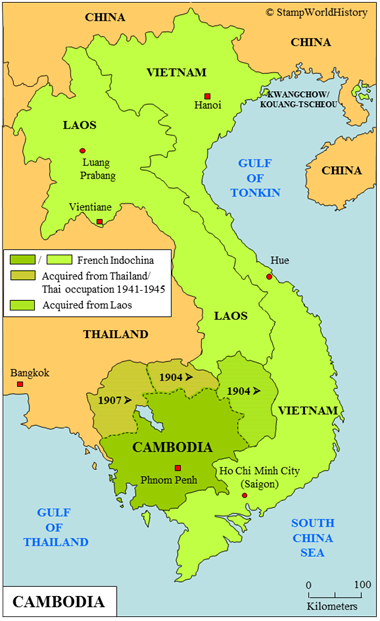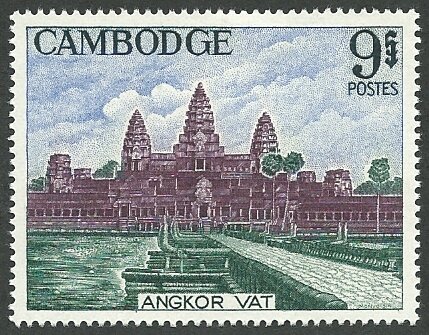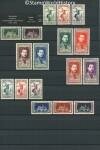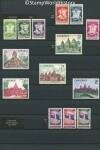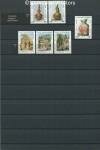កម្ពុជា
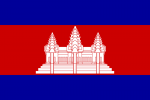
Cambodia
Kingdom
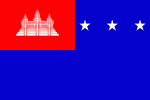
Khmer Republic
Republic
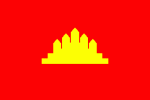
Kampuchea
Peoples Republic
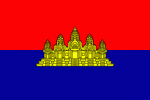
State of Cambodia
Republic

Cambodia
UN Mandate
Quick reference
General issues: Kingdom in association with France 1951-1953, Kingdom 1953-1970, Khmer Republic 1970-1975, Peoples Republic of Kampuchea 1979-1989, State of Cambodia 1989-1991, UN Mandate 1991-1993, Kingdom 1993-Present
Country name on general issues: Cambodge, Republique Khmere, Kampuchea, Cambodia
Special issues: Indian forces in Cambodia 1954-1962
Currency: 1 Piaster = 100 Cents 1951-1955, 1 Riel = 100 Sen 1955-Present
Population: 4 261 000 in 1951, 15 140 000 in 2013
Political history Cambodia
Colonial era
Cambodia is located in southeastern Asia. In the 19th century Cambodia is a kingdom pledging allegiance at times to Thailand and at times to Vietnam. To escape from Thai and Vietnamese overlordship, Cambodia, in 1863, signs a treaty of protection with France, thus becoming a French protectorate. Cambodia, as of 1888, is governed as part of the French colonial federation of French Indochina. The French leave the local rulers in place. They have, however, only nominal power, the real power rests with the French colonial administration. At the expense of Thailand, the French extend the territory of Cambodia in 1904 and again in 1907 when Cambodia reaches the borders it currently still has.
WWII and the road to independence
During WWII, the larger part of Cambodia is occupied by Japan in 1941. The parts of Cambodia acquired from Thailand in 1904 and 1907 are occupied by Thailand, one of the allies of Japan. The Japanese leave the French colonial administration – loyal to the Vichy regime in France – in place until, in 1945, the Japanese proclaim the nominally independent kingdom of Cambodia. After the Japanese capitulation in 1945, the French colonial administration is restored and the territories occupied by Thailand are returned. Cambodia then moves step by step towards independence. In 1949, it becomes a kingdom in association with France and in 1953 Cambodia gains full independence as the kingdom of Cambodia.
Independent Cambodia and the Indochina wars
Cambodia is involved in the first Indochina war until 1954, a war fought mainly in Vietnam but spilling over to all of Indochina. The war ends when the treaty of Geneva is signed in 1954. United Nations forces from different countries are sent to Cambodia to supervise the execution of the Geneva agreement. Cambodia is again involved in the second Indochina – or Vietnam – war from 1955 to 1975. The South Vietnamese Vietcong operate from Cambodia, leading to intense air raids by the United States. Cambodia is the country that suffered most from bombardments in the region.
The Khmer Rouge and rebuilding the country
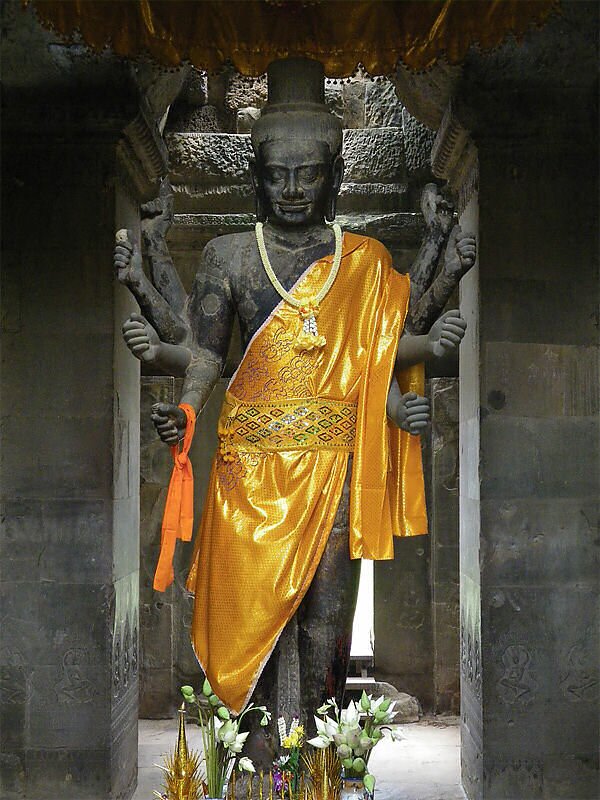
Vishnu at Angkor Wat
Following a coup d’etat in 1970, the king is deposed and the Khmer republic is installed – Khmer being the name of the people in Cambodia and of the ancient kingdom that, from Cambodia, ruled large parts of Southeastern Asia. The influence of the Vietnamese Vietcong in Cambodia leads to the emergence of the Khmer Rouge[1]French for ‘Red Khmer’. . In 1975, the Khmer Rouge take over power and establish the democratic republic of Kampuchea. The communist/Maoist policies of the Khmer Rouge lead to the death of millions of people. Well known from this period are the ‘Killing Fields’ – a number of sites in Cambodia where collectively more than a million people were killed and buried by the Khmer Rouge. In 1978, Vietnam invades Cambodia to end the Khmer Rouge regime. The Vietnamese establish the peoples republic of Kampuchea. They do not, however, manage to stabilize the whole country. The Vietnamese withdraw from Cambodia in 1989, after which the State of Cambodia is proclaimed and negotiations for the rebuilding of Cambodia are started. The negotiations lead to an agreement in 1991 and the United Nations receives the mandate to supervise the execution of the agreements and rebuild the country. The UN is involved until, in 1993, a measure of stability has been achieved and the kingdom of Cambodia is re-established. Since then, Cambodia has known relative stability. Economically Cambodia is a developing country with, among others, a growing tourism sector. One of the most famous attractions in the country is the first Hindu, then Buddhist, temple of Angkor Wat.
Postal history Cambodia
From 1892, the first stamps used in Cambodia are those of the federation of French Indochina. The stamps of French Indochina continue to be used during the occupation by Japan and will be used until 1951, when Cambodia issues its first stamps – by then having achieved self government as the kingdom of Cambodia in association with France. These are followed by issues from the respective forms of government the country had in subsequent years. An exception is the the rule of the Khmer Rouge between 1975 and 1979. The Khmer Rouge stopped all postal services and issued no stamps. When, in 1979, the peoples republic of Kampuchea was established, postal services resumed and stamps were again issued from 1980. Between 1979 and 1981, stamps are known to be issued with the overprint ‘RPK'[2]‘Republique Populaire Kampuchea’ on earlier issues of Cambodia. Postal use is not confirmed, these issues are not listed by the catalogs. Cambodia has – starting in the 1960’s – issued many stamps mainly aimed at the collectors market.
During the presence of UN forces in Cambodia, from 1954 to 1962, Indian forces were, among others, active in Cambodia. India issued stamps for use by these forces. These issues being stamps of India with an overprint in Hindi reading ‘International Commission Cambodia’.
Album pages
← Previous page: BurmaNext page: Ceylon →

